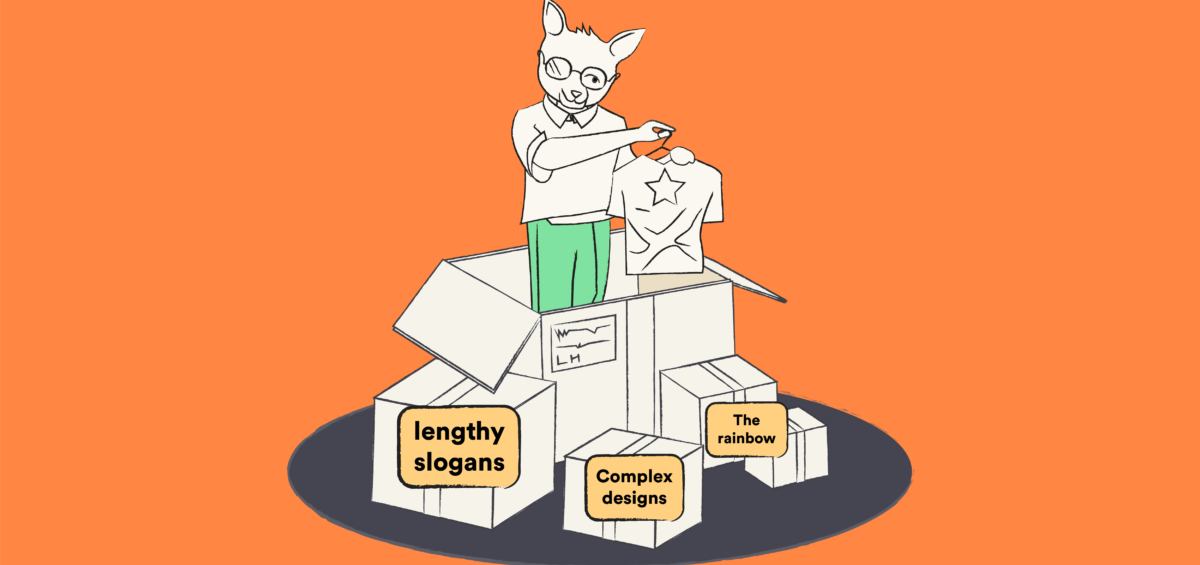In a world overflowing with visuals and information, simplicity has quietly become the most powerful form of communication. People no longer connect with brands that shout the loudest; they connect with those that speak clearly, honestly, and with purpose. That is where the concept of minimalism in branding has transformed the modern business landscape. When you think about the most memorable logos or visual identities today, they often share one thing in common, a clean and focused aesthetic that speaks volumes without unnecessary decoration. Minimalist branding trends are more than a passing design preference; they are a cultural response to the chaos of the digital age.
Consumers are drawn to clarity and authenticity, not clutter or confusion. This human shift toward simplicity is changing the way designers, marketers, and entrepreneurs build brand identities. It is no longer just about how a logo looks; it is about how it feels and what it communicates. A minimalist approach allows a brand to express its core values in the most direct and honest way possible. This article will explore how minimalist brand trends are reshaping visual identity, what drives their growing influence, and why simplicity has become the ultimate tool for modern brands. We will also look at minimalist branding examples that prove how a less-is-more philosophy can create lasting impressions and build deeper emotional connections with audiences around the world.
The Evolution of Visual Identity
Visual identity has evolved with cultural and technological changes, transitioning from bold, complex designs to minimalist branding. As audiences face information overload in a fast-paced digital environment, they seek simplicity and focus, which minimalist design provides. The rise of mobile technology and digital platforms necessitated cleaner interfaces and easy navigation, leading brands to adopt minimalist aesthetics that resonate with modern consumers who prioritize clarity and function.
The Philosophy Behind Minimalist Branding Trends
At its core, minimalism in branding is about removing distractions to highlight what truly matters. It focuses on essential elements like typography, color, and space, using them in thoughtful ways to create harmony and balance. Instead of using multiple fonts or layers of graphics, designers rely on simplicity and precision to communicate meaning.
This approach is not about being plain or boring. It is about intention. Every color, line, and word is chosen for a purpose. The goal is to convey a brand’s personality with as little noise as possible. By doing so, brands allow audiences to focus on the message rather than the design itself. Minimalist brand trends remind us that great design is not what you add, but what you decide to leave out.
Why Simplicity Builds Stronger Connections
Modern consumers appreciate authenticity and transparency. They want brands that feel approachable and honest. Minimalist designs achieve that by stripping away unnecessary flair and focusing on the essence of what a brand stands for. This is why minimalist branding examples such as clean wordmarks, neutral color palettes, and generous use of white space feel trustworthy and timeless.
When visuals are simple, people remember them more easily. The brain processes minimal designs faster, which helps in brand recall. Moreover, simplicity gives space for emotion. A minimal identity lets the story and values of a brand take center stage, instead of being buried under decorative visuals. This emotional clarity is one of the main reasons minimalist brand trends continue to grow in influence across industries.
FAQs
What is the goal of minimalist branding?
The main goal of minimalist branding is to communicate a brand’s identity in the clearest and most effective way possible. It removes unnecessary design elements and focuses on essential details that express purpose and authenticity. The result is a clean and memorable visual identity that strengthens recognition and trust among audiences.
What are the key elements of minimalist branding?
Key elements include simple typography, limited color palettes, balanced layouts, and generous white space. Each component is chosen with intention to create harmony and visual clarity. These principles work together to ensure the design feels both elegant and meaningful without any visual clutter.
How can a minimalist brand stand out?
A minimalist brand stands out by being authentic and consistent. When the message and design align perfectly, it captures attention through honesty and elegance. Instead of competing through loud visuals, minimalist brands rely on emotional connection, thoughtful storytelling, and quality presentation to make an impact.
Is minimalist branding a long-lasting trend?
Minimalist branding is not a temporary trend but an enduring approach. Its principles of clarity and simplicity have always been relevant, and as technology evolves, they become even more valuable. The appeal of timeless design ensures minimalism remains a cornerstone of visual identity for years to come.
What are the risks of using minimalist branding?
The main risk is oversimplification. If a brand removes too much, it can lose personality or become forgettable. Successful minimalist branding requires balance, ensuring that simplicity enhances meaning rather than erasing it. A strong concept and clear purpose are essential to avoid appearing generic or incomplete.
How Minimalism Shapes Brand Perception
Minimalist branding is more than an aesthetic choice; it is a strategic decision that shapes how audiences perceive a brand. When done right, it signals confidence, sophistication, and clarity. A minimalist design tells customers that the brand knows who it is and what it stands for. It communicates professionalism without exaggeration.
For instance, minimalist branding examples often showcase how small adjustments can make a huge difference. A single change in typography or spacing can transform an ordinary logo into a powerful visual symbol. By keeping elements balanced and intentional, brands appear more organized, reliable, and forward-thinking. This clean and uncluttered visual language aligns perfectly with the mindset of modern audiences who value both beauty and simplicity.
The Future of Visual Identity in a Minimalist World
Minimalist branding is poised to significantly shape future visual identities as it adapts well across various platforms, ensuring consistency and recognition. The influence of technology, including AI and virtual reality, will keep minimalism essential for clarity in design amidst overwhelming visual stimuli. Additionally, minimalism aligns with sustainability trends, as brands adopt eco-friendly practices and efficient designs that reflect a shift toward mindful consumption.
Minimalist Branding Examples That Inspire
Minimalist branding examples can be found across industries, from fashion to technology to lifestyle. Many brands have simplified their logos, reduced their color palettes, and adopted cleaner typography to align with modern aesthetics. These changes are not about following a trend, but about creating timeless designs that can grow with the brand.
Some brands have removed symbols or detailed graphics, relying instead on simple wordmarks that highlight their names. Others have refined their visual systems to focus on consistent spacing and minimal color contrast. The results are elegant, confident, and instantly recognizable. These examples prove that the power of minimalism lies in its ability to stay relevant in a world that constantly changes.
How Businesses Can Embrace Minimalist Branding Trends
Adopting minimalism in branding involves a strategic approach that starts with a clear understanding of the brand’s purpose and target audience. Designers must prioritize clarity of message and emotional tone before selecting visual elements. Minimalism emphasizes refinement, focusing on essential details to convey what truly matters. Brands can simplify their logos, minimize unnecessary patterns, and limit their color palette while ensuring legibility, balance, and alignment with brand values.
Typography is crucial, as the appropriate typeface can convey character without decorative elements. Furthermore, successful minimalist brands maintain consistency across all visual touchpoints, from websites to packaging, fostering a unified identity that audiences can easily recognize and trust.
To sum up, minimalist branding trends continue to redefine how visual identity is created and perceived. In an era where audiences value authenticity and focus, simplicity has become the language of trust. Minimalism in branding is not about stripping away creativity, but about expressing it with purpose. As brands move toward a more thoughtful and sustainable future, minimalism will remain at the heart of design, guiding the way toward clarity, beauty, and emotional connection.







